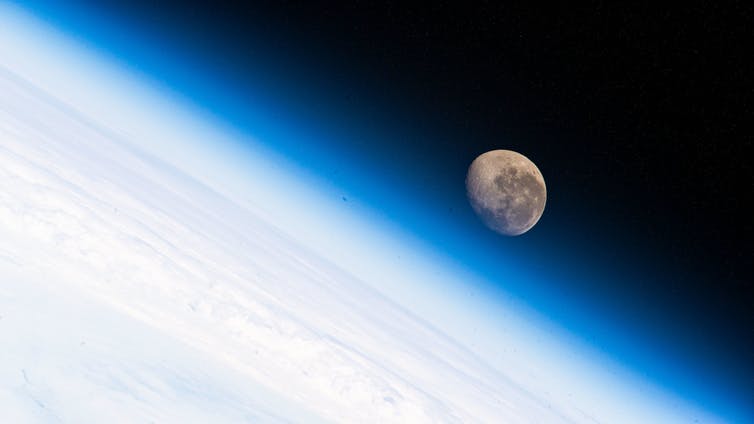Space travel is all about momentum.
Rockets turn their fuel into momentum that carries people, satellites and science itself forward into space. 2021 was a year full of records for space programs around the world, and that momentum is carrying forward into 2022.
Last year, the commercial space race truly took off. Richard Branson and Amazon founder Jeff Bezos both rode on suborbital launches – and brought friends, including actor William Shatner. SpaceX sent eight astronauts and 1 ton of supplies to the International Space Station for NASA. The six tourist spaceflights in 2021 were a record. There were also a record 19 people weightless in space for a short time in December, eight of them private citizens. Finally, Mars was also busier than ever thanks to missions from the U.S., China and United Arab Emirates sending rovers, probes or orbiters to the red planet.
In total, in 2021 there were 134 launches that put humans or satellites into orbit – the highest number in the entire history of spaceflight. Nearly 200 orbital launches are scheduled for 2022. If things go well, this will smash last year’s record.
I’m an astronomer who studies supermassive black holes and distant galaxies. I have also written a book about humanity’s future in space. There’s a lot to look forward to in 2022. The Moon will get more attention than it has had in decades, as will Jupiter. The largest rocket ever built will make its first flight. And of course, the James Webb Space Telescope will start sending back its first images.
I, for one, can’t wait.

NASA is planning to build a base on the Moon, and many missions in pursuit of this goal are happening this year.
NASA Johnson Space Center via Flickr, CC BY-NC-ND
Everyone’s going to the Moon
Getting a rocket into orbit around Earth is a technical achievement, but it’s only equivalent to a half a day’s drive straight up. Fifty years after the last person stood on Earth’s closest neighbor, 2022 will see a crowded slate of lunar missions.
NASA will finally debut its much delayed Space Launch System. This rocket is taller than the Statue of Liberty and produces more thrust than the mighty Saturn V. The Artemis I mission will head off this spring for a flyby of the Moon. It’s a proof of concept for a rocket system that will one day let people live and work off Earth. The immediate goal is to put astronauts back on the Moon by 2025.
NASA is also working to develop the infrastructure for a lunar base, and it’s partnering with private companies on science missions to the Moon. A company called Astrobotic will carry 11 payloads to a large crater on the near side of the Moon, including two mini-rovers and a package of personal mementos gathered from the general public by a company based in Germany. The Astrobotic lander will also be carrying the cremated remains of science fiction legend Arthur C. Clarke – as with Shatner’s flight into space,…
